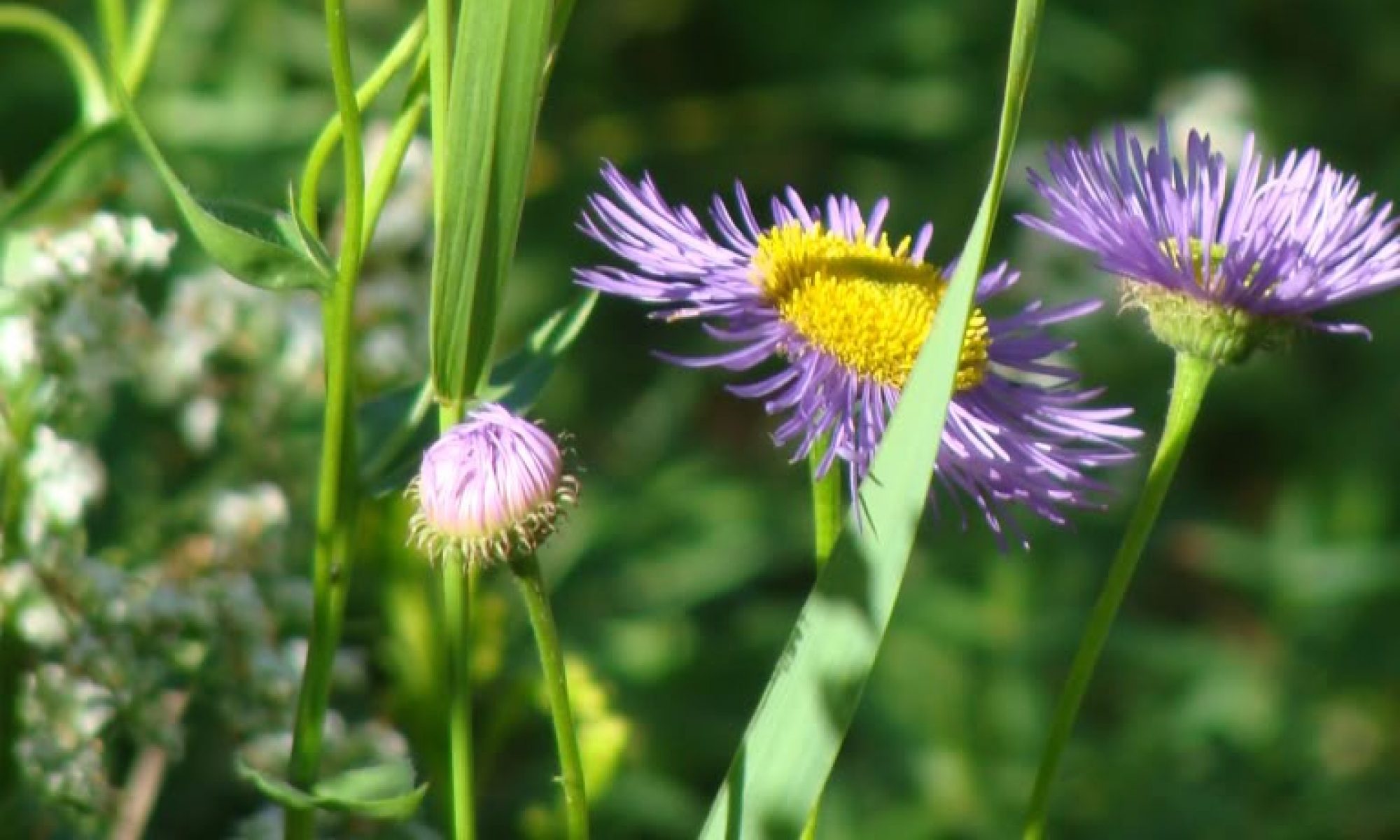Insects are such a huge part of the food web I’m trying to build in my garden, but they can be hard to spot. Doug Tallamy, whose brilliant Homegrown National Park movement I am devoted to, finds hundreds of caterpillars on his oak trees. Meanwhile, I haven’t seen a caterpillar all year in my yard. I haven’t had a lot of time to look for them, though. But I know they are there because moths and butterflies are showing up every day during the summer. I see more and more moths out in the garden as I water or just wander around.
The Douglas asters just started blooming about two weeks ago and might be my favorite native plant. When the sun is on them, about half the day, they attract a bevy of native pollinators. The star of the show so far is a new butterfly, the gray hairstreak. I saw one sitting on an aster flower. A big chunk had been bitten out of the back of its wings, but it seemed fine. Scientists believe that the bright spots and hairstreaks cause predators to mistake the tail for the head and attack the wrong end. It seems to be working. Some bird got a mouthful of butterfly wing, and the butterfly lived to pollinate my asters and mate and hopefully lay eggs somewhere nearby. We’ve lived here almost 26 years and I’ve never seen a gray hairstreak butterfly before. I’m chalking it up to planting native plants.
This was not the first gray hairstreak butterfly I have ever seen. Coincidentally, I was visiting friends Brian and Dean in Happy Valley, Oregon, and they have a few native plants in their new garden. Sitting on a blue lupine was a gorgeous little butterfly. Turns out that was my first gray hairstreak. And less than a week later, I saw one here at home.
While out gardening today I saw two woodland skippers, too. They weren’t on the native asters, but they were in the garden–close enough for me!
The most fun thing about those asters is standing nearby and watching the buzz all around those plants as native bees and other pollinators flit around.








The photos are of Texas sweat bees, a jewel of a species of native bee. There were several types of hoverflies on the flowers yesterday, but I neglected to get their photos.
The most disappointing native plant I’ve grown this year has to be Collomia grandiflora. The disappointment is deeper because the plants got off to a great start and they grew beautifully and strong in pots. I planted them out into the native plant garden and they continued to grow and developed large heads of flower buds at the apex of each stem. And then they didn’t open.
Meanwhile, an errant Collomia seed landed in one of my patio pots and grew on its own and did beautifully!
Another fun thing happened in Happy Valley. Dean and I were wandering around and I was noticing more and more Garry oak trees or Oregon White Oaks. We went to a park near a golf course that had HUGE old specimen trees, hundreds of years old, and rife with acorns. I picked some off the ground and Dean made a note to go back in the autumn and harvest some.








